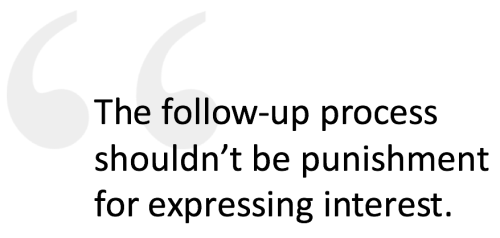You want to hire the right provider for the job. Some mis-matches are obvious – you don’t hire a plumber to represent you in court; nor do you contract with a fast-food trainee to fly a jumbo jet.
(those aren’t decisions so much as DUH-cisions!)
But when considering a training vendor, it’s often not so clear-cut. What I’ve seen over the years is that there are several distinct types of projects, which require different kinds of vendors (though with some overlap). I’ll make an attempt to classify these different types of projects with one of my patented Ugly Graphics™

That sea of boxes is about as clear as mud, so let me explain. Let’s start with the bottom level, Short-term/Single-focus projects:

Most training departments undertake a number of smaller, more focused projects each year. Examples include:
- Smaller training modules
- Selling workshops
- Compliance courses
- Facilitation training
Many boutique vendors specialize in such areas and do a great job with these more limited-scope/limited-focus endeavors. Choosing among them can be a challenge because there are so many providers, and some of them overlap.
These point solutions definitely play an important role in the outsourcing of training. These projects can range from a few thousand dollars on up to six figures, but they typically retain a fairly narrow focus and, often, a short timeline.
It’s important to bear in mind, however, that not all boutique vendors have the scale to tackle the next level of project, the Major Initiative.

Some training projects take a number of months to execute, with lots of moving parts, and a more complex rollout. This will require a vendor with a more diverse set of in-house (and contract) resources and solid expertise in customer-focused project management. Examples include:
- Product launch meetings (and full learning systems)
- Technology rollouts
- Curriculum re-design
- Major eLearning conversions
These vendors may still be “boutique” in their focus, but they’re well beyond the two-people-in-a-garage phase of business growth. Most of these projects will be budgeted at the upper five figures (at the low end), into six figures.
Often, these vendor partners may also do short-term projects for you; however, their sweet spot is handling your larger, multi-faceted headaches. When successful, these can become productive long-term partnerships involving multiple initiatives over the long haul.
There is one higher-level provider – that rare breed of Consulting/business process/organizational design partner. These larger entities specialize in multi-year change management blueprints (and execution), helping a training organization to properly configure itself for present and projected future needs. They may also provide staffing services and major project outsourcing:

These types of organization-wide efforts are generally not initiated at the department level – they are typically spearheaded by executives who oversee the entire commercial training function. And the vendor/partners that provide this level of service are not boutique providers – they undertake 6 and 7-figure projects that touch every aspect of the training function.
(Let me note here that Impactiviti, as a client-vendor matchmaking service, has best-in-class partners hand-selected for you at all of these levels).
OK, now let’s remove, for the time being, that final rarefied strata of organizational design because those projects are less common. There are still a couple of other types of vendor/providers we want to consider whose services flow into, and out of, the other types of projects:

On the one side – what we might call “setting the compass” – are those firms that provide high-level strategic direction for the department. These services can include:
- Benchmarking studies
- Process design
- Curriculum design
- Branding and identity for the department*
The main offering here is high-level expertise to help training directors map out plans and structures that others (internal and external resources) will typically implement. These boutique providers range in size from individual consultants to larger life sciences consulting firms.
*(this, by the way, is a niche consulting service Impactiviti provides directly)
A growing emphasis on outcomes leads to a growing emphasis on metrics and measurement, so one emerging area is the more technical area of assessment and analytics. Some providers of other services will provide some level of outcome-analytics, as will some of the consulting firms. This will certainly be woven into any organizational-design level initiative. Expect this practice to increase in importance, as it is becoming more central in all of healthcare.
I hope that this classification helps – over many years, I’ve seen projects fall roughly into these categories, and it helps greatly when selecting the proper vendor to keep in mind what is the scale and nature of the project. You can contact Impactiviti at any time (AskSteve@impactiviti.com) for targeted vendor recommendations for any of your projects.
What do you think – did I miss anything with these diagrams?
Read Full Post »















